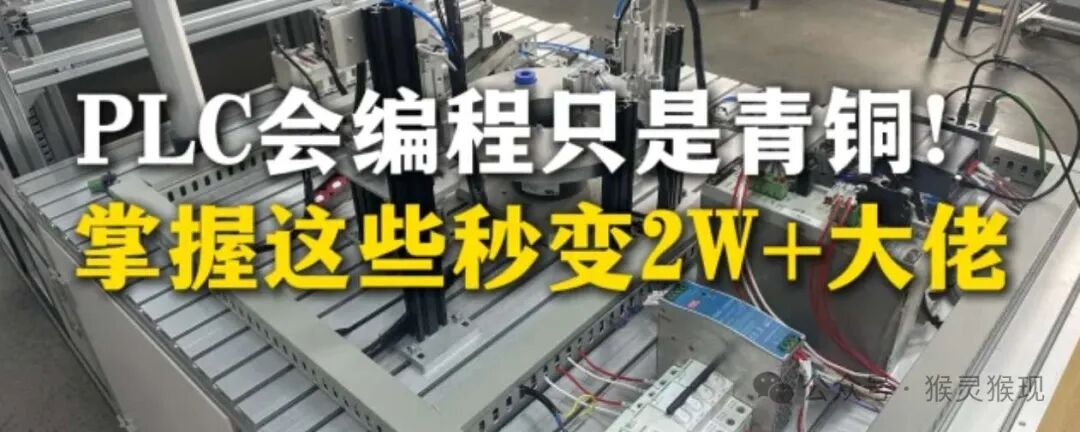
PLC Application Example: Biscuit Oven Temperature Control System Increases Product Consistency by 30%!
Introduction
“Why do biscuits from the same batch always have different colors?” This is a quality issue that troubles many biscuit manufacturers. Today, I want to share a real PLC application case — biscuit oven temperature control system upgrade, which has improved product consistency by 30% through precise temperature control!“This is not just a simple temperature setting, but an intelligent temperature dance!” Want to know how it was achieved? Let’s dive into this “delicious” technical case together!
Temperature Challenges of Traditional Ovens
First, let’s take a look at the challenges faced by traditional biscuit production lines:
-
Large temperature fluctuations: The temperature control of ordinary ovens is like a roller coaster, set at 180°C, but it may fluctuate between 170-190°C.
-
Significant temperature differences across zones: The temperature at different locations in the oven can differ by more than 10°C, leading to inconsistent colors of biscuits on the same baking tray.
-
Slow response time: When an abnormal temperature is detected, traditional control systems take a long time to adjust back.
“Imagine this, it’s like having a slow-reacting person control a symphony orchestra, the result is predictable!” Inconsistent biscuit colors not only affect aesthetics but also directly impact taste and shelf life.
Core Design of the PLC Temperature Control System
Our solution is based on the Siemens S7-1200 PLC, combined with high-precision temperature sensors and fast-responding heating elements, to build a closed-loop temperature control system.“This is not just simple on/off control, but a ‘thinking’ temperature steward!”
Three Major Innovations of the System:
-
Independent control of multiple zones:
-
The oven is divided into 6 independent temperature zones
-
Each temperature zone is equipped with independent temperature sensors and heating elements
-
“It’s like having a dedicated air conditioner for each seat!”
Adaptive PID algorithm:
-
The PLC has a built-in adaptive PID controller
-
Automatically adjusts control parameters based on real-time temperature changes
-
“This algorithm ‘learns’ the characteristics of the oven, becoming more accurate with use!”
Dynamic compensation of temperature curves:
-
Automatically adjusts temperature curves based on biscuit type and thickness
-
Compensates for temperature fluctuations when the door is opened/closed
-
“Like an experienced chef, knowing when to increase the heat!”
Implementation Methods
Let’s take a closer look at how this system works:
1. Hardware Configuration
| Component | Model | Features |
|——|——|——|
| PLC | Siemens S7-1214C | With PID control function |
| Temperature Sensor | PT100 | ±0.1°C accuracy |
| Solid State Relay | SSR-40DA | Millisecond response |
“This hardware combination is like an F1 racing team, with each member being a champion in their field!”
2. Software Logic
// Example code snippet
IF "Oven Door Status" = Open THEN
"Compensation Temperature" := 5; // Increase set temperature when door is open
"PID.Adaptive Mode" := TRUE;
ELSE
"Compensation Temperature" := 0;
END_IF;3. Human-Machine Interface Design
-
Real-time display of temperature curves for 6 zones
-
Menu for selecting biscuit types (crispy, soft cookies, etc.)
-
Historical data recording and alarm functions
-
“Operators can grasp the entire ‘baking symphony’ status at a glance!”
Actual Effect Comparison
Let’s let the data speak:
| Metric | Before Upgrade | After Upgrade | Improvement |
|——|——–|——–|———-|
| Temperature Fluctuation Range | ±10°C | ±1°C | 90% |
| Product Color Difference Qualification Rate | 70% | 95% | 30% |
| Energy Consumption | 100% | 85% | 15% energy saving |
“What surprised the quality control manager the most was that the consistency of biscuit taste also improved significantly, with customer complaints reduced by 40%!”
Common Problems and Solutions
During the project implementation, we encountered several challenges:
-
Sensor interference issues:
-
Phenomenon: Temperature readings occasionally jump
-
Solution: Use shielded cables and increase software filtering
-
“After putting a ‘shield’ on the sensor, the data became much more stable!”
Heating element response delay:
-
Phenomenon: Temperature adjustments lag
-
Solution: Replace with solid state relays, reducing response time from seconds to milliseconds
Resistance to change from operators:
-
Phenomenon: Older employees are reluctant to change their operating methods
-
Solution: Design an intuitive HMI interface and organize specialized training
-
“When they saw the convenience brought by the new system, even the most stubborn veteran became a promoter of the system!”
How to Apply This to Your Production Line?
If your food processing plant faces similar issues, you can follow these steps for transformation:
-
Current Situation Assessment (1-2 weeks):
-
Record current temperature fluctuation conditions
-
Analyze the main reasons for product non-conformance
Solution Design (2-3 weeks):
-
Determine the number of zones based on oven size
-
Select appropriate PLC and sensors
Pilot Implementation (1 week):
-
First, upgrade one production line as a pilot
-
Collect operational data
Full Promotion (depending on the number of production lines):
-
Optimize the solution based on pilot experience
-
Train operating and maintenance personnel
“Remember: A good temperature control system is not bought, but ‘customized’ according to your product characteristics!”
Interactive Discussion
-
Does your production line also have product consistency issues? What are the main manifestations?
-
What control challenges in the production process have you considered solving with PLC?
-
If you have implemented similar transformations, what was your biggest gain?
Conclusion
The successful transformation of this biscuit oven temperature control system proves that “intelligent PLC control is not a luxury, but a necessary investment to improve product quality!” A 30% improvement in product consistency not only reduces waste but also enhances the brand’s market competitiveness.
“Next time you eat a biscuit with uniform color and perfect taste, perhaps it hides the wisdom of PLC engineers!” If you have any questions about this system or want to share your experiences, feel free to leave a comment for discussion!
ShareSaveViewLike